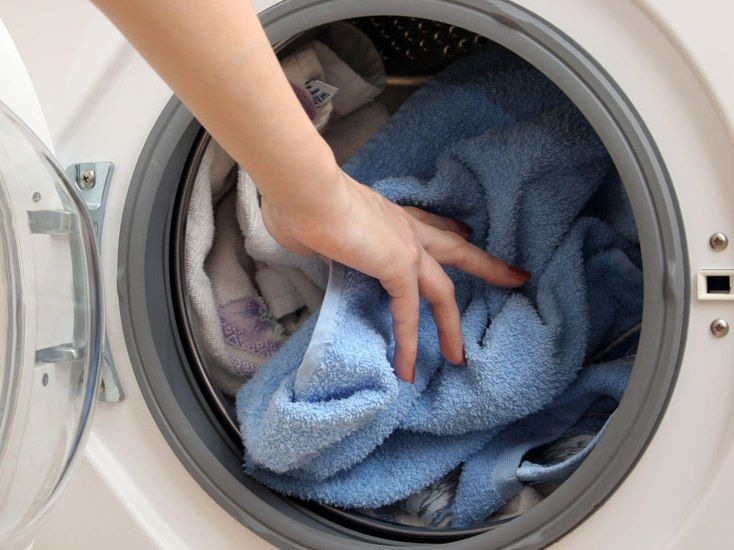Do-it-yourself lawnmower from a washing machine
 A lawn mower, today, is an almost irreplaceable thing for those who have a dacha or a country house.
A lawn mower, today, is an almost irreplaceable thing for those who have a dacha or a country house.
It doesn’t matter how often you travel out of town, but if you have your own house there with even a small lawn, you will have to cut it one way or another. For these purposes, there is a lawn mower - an optimal device that combines all the necessary functionality.
It is mistakenly believed that a lawn mower is something established and has one specific model. In fact, this type of device has a huge number of variations: from mini machines to fairly large lawn mowing devices. That is why, when thinking about making this type of technical device yourself, you need to understand what you want to see in the end.
The content of the article
Where to begin?
You should definitely start by selecting all the details. Since you are using a washing machine as a source, you will need:
- Engine.
- Wheels. In this case, you can use a stroller or cart: borrow parts from them.
- Metal sheet. Be sure to observe the thickness when choosing: it should be 2 - 4 mm.
- Knives. Kitchen ones won't work, but tool steel ones are just right.
- Water pipe.It will serve as a handle for your future lawn mower and that is why it must be thin.
- Electrical cable accordingly.
- Fork.
- Directly the switch.
Let's go through the details
 Returning to the topic of the engine. This is a very important part, so some factors need to be taken into account.
Returning to the topic of the engine. This is a very important part, so some factors need to be taken into account.
Conventionally, you can focus on a 180 W motor with a start relay and, of course, a capacitor (suitable for the simplest and no longer needed washing machine, ideally if it is an old Soviet “origin” washing machine, since the inherent heaviness will come in handy here).
But you can not only take the wheels from a baby stroller or cart, but also make them yourself. In this case, you will need plywood and bearings directly. When installing, maintain a distance of 5 - 6 cm from the ground. This length is determined by the height of grass mowing. As for the number of wheels, it all depends on the model you will be making.
For example, 4 wheels are the most optimal option, since the machine becomes stable and will mow the lawn evenly. Three wheels are a more economical option, but in terms of performance there will be practically no differences, except perhaps an individual feeling of comfort and some aspect of aesthetics: nothing more. Two wheels are good because they provide the ability to quickly maneuver. You need to adapt to this, and then it is a very convenient option.
 The metal sheet should also not be chosen at random. First of all, the dimensional parameters: 30 by 50. This is the approximate point from which we need to move further.
The metal sheet should also not be chosen at random. First of all, the dimensional parameters: 30 by 50. This is the approximate point from which we need to move further.
The width of the frame, as a rule, is realized in the approximate range of 30 to 50 cm. This is the most optimal option.There is also no need to overdo it with depth: it is enough only if the engine does not go beyond the boundaries.
Knives must be made of mild steel, and the size must vary between 2 - 3 mm (length) and 20 - 50 mm (width). Pay attention to the steel itself: it should not be brittle. For example, a hacksaw blade for wood has everything necessary to be used as a lawn mower blade. The handle is welded to the lawn mower itself: do not forget to leave room for winding the cable!
Manufacturing process
 The manufacturing process is not as complicated as it seems, the main thing is to approach it wisely and adhere to the prudently planned plan.
The manufacturing process is not as complicated as it seems, the main thing is to approach it wisely and adhere to the prudently planned plan.
We set aside one day to assemble the lawn mower: one day is enough for you and let’s get started. To begin with, we take the chassis from a cart, or strollers, and use it as a basis for the subsequent installation of a metal sheet.
Next, we take the pipes and make a handle. Its shape should resemble the letter “p” with individual errors, that is, you adapt this element to suit yourself. We make the height in accordance with the height and weld it to the existing platform.
We cut a hole in the same platform: the motor shaft will be placed here. Pay attention to the front of the frame: you will need to make a protective arch or the grill itself, but always from mild steel. In principle, a grill is even better, since it will provide you with some kind of security. This applies to those cases when the knife slides directly from the shaft or helps to make a certain fixation for the stems, as a result of which even mowing will be ensured.
Regarding the fastening process: Attach the grid strips (top and bottom) with bolts, then screw in the wire previously prepared for this. This type of grid provides clearance for the knife. According to technical parameters, this is 1 cm in front, and 2 cm from below and, respectively, from above.
Finally the engine. As noted earlier, it is installed directly on the platform. You will install a knife, already sharpened, on the shaft itself, and first make a hole in the middle. Installation of the knife must be done carefully, namely: twirl the knife in your hands, carefully of course. If the knife spins easily and without any obstacles, then this is what you need.
Safety precautions
 With all this, you should not forget about safety precautions. Do not run the lawn mower in the rain or when the grass is still wet.
With all this, you should not forget about safety precautions. Do not run the lawn mower in the rain or when the grass is still wet.
Still, this is a self-assembled lawn mower, not a factory one, and the wires can, firstly, fail, and secondly, they are not so insulated that you can completely trust them.
Of course, you should not give a lawnmower to children. A lawnmower is not a toy! Finally, before you mow your lawn, check the grass for any foreign objects. And if the blade jams, do not try to fix the problem until the mower is powered off.
Let's sum it up
Thus, assembling your own lawn mower using parts from a washing machine will not be difficult. By adhering to the above plan and adding a little effort, you will get a working machine that will serve you for many years.





